CarEdge saved me over 4,500 dollars on a brand new Honda Pilot. I can't say thank you enough.
Price intelligence
Find a wide range of vehicle listings with market insights on new and used listings near you.


Help us personalize your CarEdge experience — it only takes a second.
Your answers help us personalize your CarEdge journey — we’ll follow up with tips and next steps that match your buying timeline.

As much as I love electric vehicles, their faults are not lost on me. Charging infrastructure lacks, service outside of warranty is costly, and most of all, they’re really expensive. Despite the hurdles facing EVs in 2022, a new Bank of America Merrill Lynch Car Wars study predicts that EVs, PHEVs and hybrids will make up 60% of new models in 2026. With so many new electric cars coming making debuts in 2023 and 2024, time is running out to prepare the masses for the big changes ahead.
Every year, Bank of America Merrill Lynch releases their cleverly-named Car Wars report. The report leverages the bank’s access to big data to forecast automotive industry trends like no other. In the 2022 Car Wars Report, John Murphy, a senior auto analyst at Bank of America Merrill Lynch, told Automotive News that he expects automakers to launch roughly 245 new models over the next four years. That averages out to 61 new models per year — 50 percent higher than the average over the past two decades.
Why the flood of new car models? Simply put, new powertrains inspire new models. No one wants to retrofit a billion-dollar electric powertrain onto a decades-old chassis.
Analysists took the strategies of each major automaker into consideration and shared their market share forecasts for model year 2025. Notably, Stellantis and Nissan are forecast to lose market share despite funneling billions of dollars into new electrified models. General Motors, Honda and European brands are forecast to maintain steady market share in the U.S. market. With the upcoming Silverado EV, Cadillac Lyriq and Equinox EVs just around the corner, it’s not what automakers like to hear at such a crucial moment.

The automakers with the highest model replacement rate fared best in the Car Wars analysis. Ford, Toyota and the Korean automakers have the highest expected replacement rate, and therefore are expected to gain market share.
However it’s what Bank of America thinks about Tesla that’s drawing headlines.

In the annual Car Wars study, Bank of America Merrill Lynch senior auto analyst John Murphy predicts that Tesla’s EV market share will drop from over 70% today to just 11% in 2025. That’s the most pessimistic Tesla forecast we’ve seen in a few years, harkening back to when talking heads from legacy automakers regularly predicted doom and gloom for Tesla.
Why the forecasted 60% drop in market share? Murphy cites the massive push to electrification from the likes of Ford, General Motors, Hyundai and Kia. It’s not clear if Murphy considered the significance of Tesla’s Supercharger Network, top-notch over-the-air update capabilities and high brand loyalty in his forecast. What do you think?
Looking for EV sales numbers? July is here, and that means the second quarter of 2022 has come to an end. As automakers release their Q2 2022 EV sales numbers, be sure to check the latest updates and statistics at CarEdge’s EV market share and vehicle sales report.
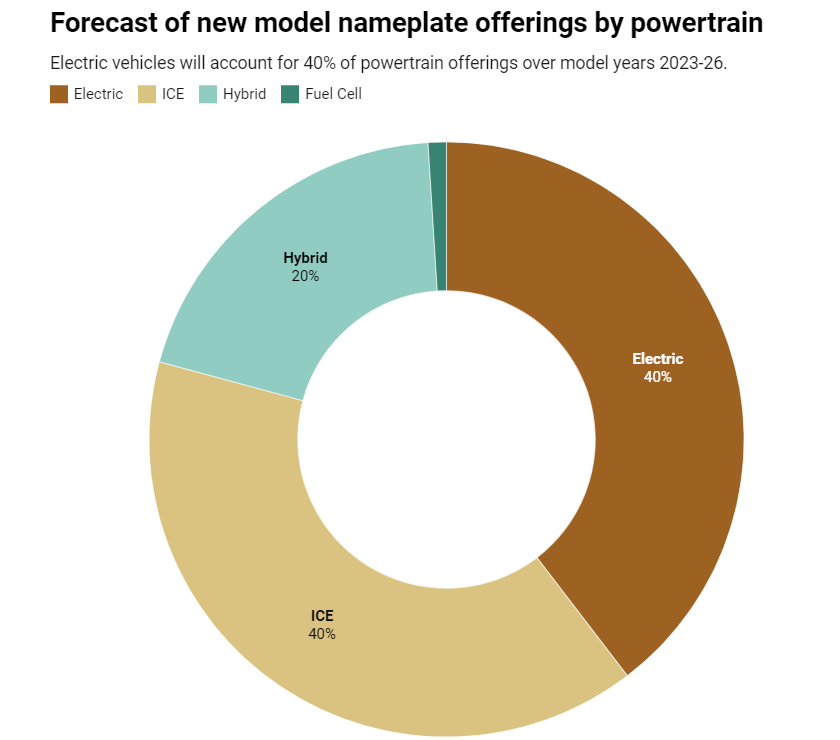
Of the new models introduced between 2023-2026, 60 percent will be either electric or hybrid while 40 percent will be internal combustion. Among notable 2023 electric cars just around the corner are electric trucks, sedans, and a whole lot of crossovers.
Headline-grabbing claims aside, this EV market share forecast is in line with much of the industry’s thinking. In fact, automakers are sure to hope that these numbers become reality, as they are actively investing a cumulative total of roughly $500 billion dollars in electrifying their lineups.
With high-stakes new electric cars in 2023, legacy automakers are definitely taking EVs seriously. Which 2023 electric car are you most excited about?

As drivers warm up to the idea of going electric, every electric vehicle recall is sure to turn heads, regardless of severity. 2022 is a huge year for automakers unveiling their next generation of electric vehicles. With over half a trillion dollars invested in EVs, there’s a lot riding on the success of these new arrivals. Several electric vehicle models have already been subjected to recalls. Fortunately, most of them do not directly involve electric powertrains. These are the EVs facing recalls in 2022. We’ll update this page as future recalls are inevitably announced.

October 2022 – Rivian recalled every vehicle it has produced, including all R1T electric trucks, R1S electric SUVs, and EDVs produced for Amazon. The vehicles were recalled because of concerns that a bolt in steering assemblies wasn’t sufficiently tightened.
No accidents have been reported, but the recall is still causing massive headaches for the young automaker. The recall fix is already available, it’s as simple as tightening a (very important) screw. However, the challenge lies in the limited locations of Rivian Service Centers. For example, the state of Texas has one service center in Houston. There are just 5 Rivian service centers on the entire East Coast. Most locations are in California. See the full list of locations.
Fortunately, Rivian has mobile service technicians, but they’ll surely have their hands full. See additional details on the Rivian recall here.
June 23, 2022 – The Toyota bZ4x and Subaru Solterra are EV siblings co-developed by the two Japanese automakers. Just a month into deliveries, the two models have been recalled globally due to an issue with their wheel hub bolts that could in fact cause the wheels to fall off. Fortunately, the issue does not involve Toyota and Subaru’s brand-new electric powertrain.
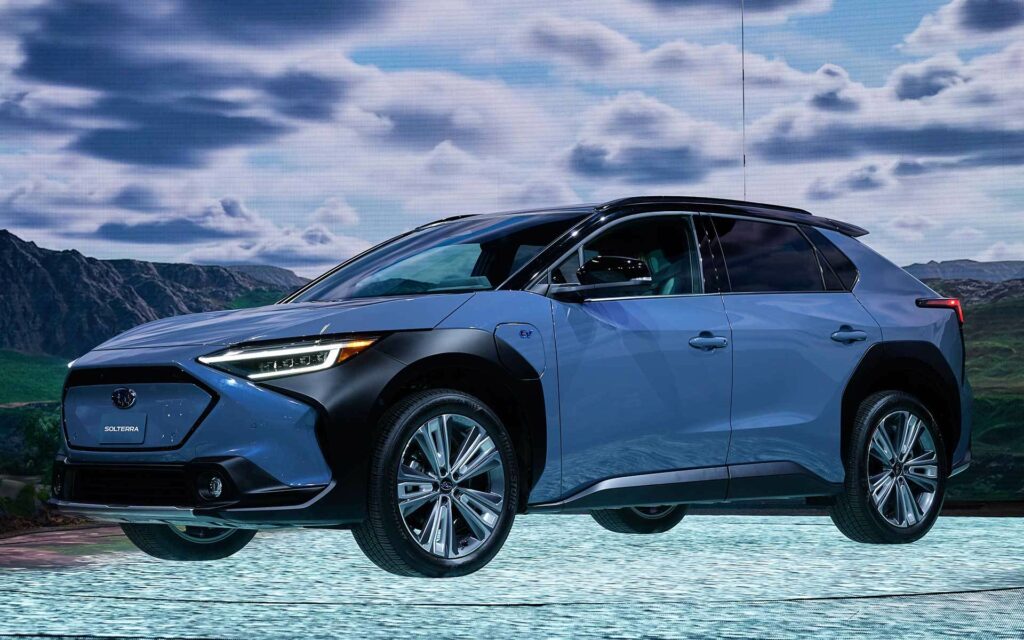
The US National Highway Traffic Safety Administration (NHTSA) recall notice warns owners not to drive their vehicles until they are repaired. This isn’t a good look considering the significance of Toyota’s first all-electric vehicle. A bZ4X and Solterra recall remedy is currently under development according to the US NHTSA.
“The cause of the issue and the driving patterns under which this issue could occur are still under investigation,” the notice says.
The recall affects 2,700 bZ4x models and 2,600 Solterras globally. See if your Toyota bZ4X VIN number is subject to the recall at Toyota’s official recall page. You can check if your Subaru Solterra is impacted at Subaru’s official recall site.
June 27, 2022 – The electric F-150 Lightning is the most-anticipated new model making a debut this year. Ford Motor is recalling 2,906 F-150 Lightnings because of a software issue that could result in a failure to provide low tire pressure warnings. The 200,000 F-150 Lightning reservation holders are certainly relieved to find that this recall is not related to Ford’s all-new electric powertrain.
In this particular recall, simple human error is at fault. Ford says that the recommended tire cold inflation pressure was incorrectly set to 35 psi instead of 42 psi. No accidents have resulted from this F-150 Lightning recall, but it’s the fix that’s noteworthy. The recall gives Ford a publicized opportunity to show the world that the F-150 Lightning is OTA capable. Over-the-air updates, first implemented on a large scale by Tesla, are no easy feat. Plenty of automakers can update navigation and infotainment via OTA update, but few are capable of firmware OTA updates that tinker with the powertrain.
Learn more about how over-the-air updates are changing how cars get serviced.
F-150 Lightning Recall Fix: Those who wish to receive the recall fix immediately may head to a Ford dealership service center immediately. Otherwise, Ford says the over-the-air update will be available to download via home WiFi within a few weeks. Check to see if your F-150 Lighting VIN number is impacted by the recall at Ford’s official recall page.

May 13, 2022 – As an IONIQ 5 owner myself, I was not thrilled to see the first manufacturer recall coming in one month into ownership. The US National Highway Traffic Safety Administration (NHTSA), Hyundai and Kia have announced a recall for select VIN numbers of the 2022 model year Hyundai IONIQ 5 and Kia EV6.
The IONIQ 5 and EV6 share Hyundai Motor Group’s new e-GMP electric platform. The recall is for the potential for disruptions to the vehicle’s parking actuator system when the vehicle is off. Sudden voltage fluctuations may occur while the vehicle is off, potentially causing the parked vehicle to disengage from ‘Park’ momentarily. If this occurs while the vehicle is parked on uneven terrain, vehicle rollaway is possible.
IONIQ 5 and EV6 recall fix: A fix is already available, but you’ll have to visit your Hyundai or Kia dealership service center. I just got the recall fix done at my local Hyundai dealer. They had never seen an IONIQ 5 before, and one employee asked if I was coming in for an oil change. Nevertheless, I was in and out of the dealership in about 30 minutes.
Check to see if your Hyundai IONIQ 5 is involved in this recall at Hyundai’s official recall page. You can see if your Kia EV6 is impacted at Kia’s official recall page.
Learn more about the IONIQ 5 recall here. Unfazed by the recall and looking to buy an IONIQ 5? Here’s how I found a Limited AWD IONIQ 5 at MSRP. It wasn’t easy.
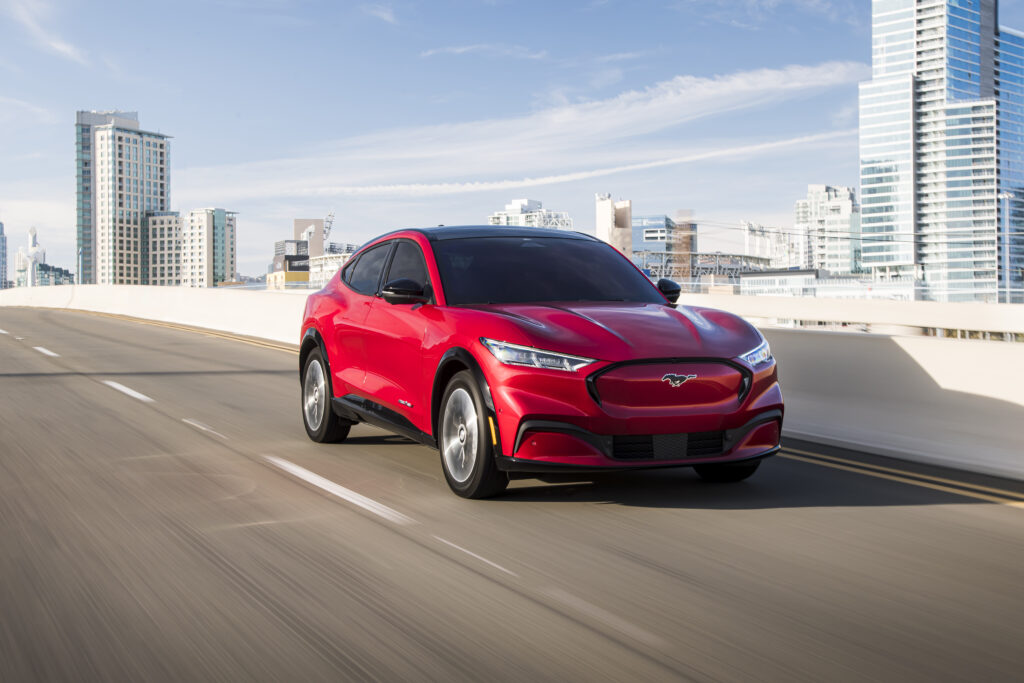
June 14, 2022 – Ford is recalling all 50,000 Mustang Mach-E electric crossovers because of the risk of power loss. The possible power loss could occur while the vehicle is in motion or parked.
The recall is due to problems with the Mustang Mach-E’s battery contactor, which is a switch that determines which vehicle components the battery sends power to. Interestingly, the power loss is more likely to occur when putting the pedal to the metal for maximum acceleration, according to Ford. If power loss occurs, a powertrain malfunction warning light will illuminate on the dashboard, and the vehicle will display “Stop Safely Now’ in the gauge cluster behind the steering wheel. Clearly, it’s time to pull over immediately with a message like that.
Ford Mustang Mach-E recall fix: Ford has pursued Tesla in more ways than one. In addition to ending EV lease buyouts and going for direct-to-consumer sales via Ford Model e, Ford has brought over-the-air updates to its lineup. Ford says that Mustang Mach-E owners will receive an over-the-air update sometime in July to install a software remedy for the recall. Until then, a stop-sale is in place.
Learn more about the Ford Mustang Mach-E recall at Ford’s official recall page.
Several hundred automotive recalls happen every year across vehicle classes and powertrains. There will surely be more to come. What we’ll be keeping an eye on is how the latest electric powertrains are performing. Luckily, most of the EV recalls to date have been for components other than the electric powertrain. However, we all remember how the Chevrolet Bolt recall and fire hazard tarnished GM’s reputation. Check back for the latest updates!

Hyundai and Kia’s new e-GMP electric platform has seen plenty of success (and a few hiccups), and the Korean giants are just getting started. Everyone from Tesla die-hards to Bloomberg News heap praise on the new IONIQ 5 electric crossover. I love it so much that I even bought one for my family. However, not everyone wants a cavernous crossover. There’s still a sizable market for sedans, especially electric sedans with impressive range and performance figures. Enter the 2024 Hyundai IONIQ 6, the next in line to debut from Hyundai Motor Group’s quickly growing electric lineup.
How much does the IONIQ 6 cost? What’s the range, charging speed and battery size? We finally have some answers. Here’s what we know. Check back as this page will be updated as Hyundai released more information.
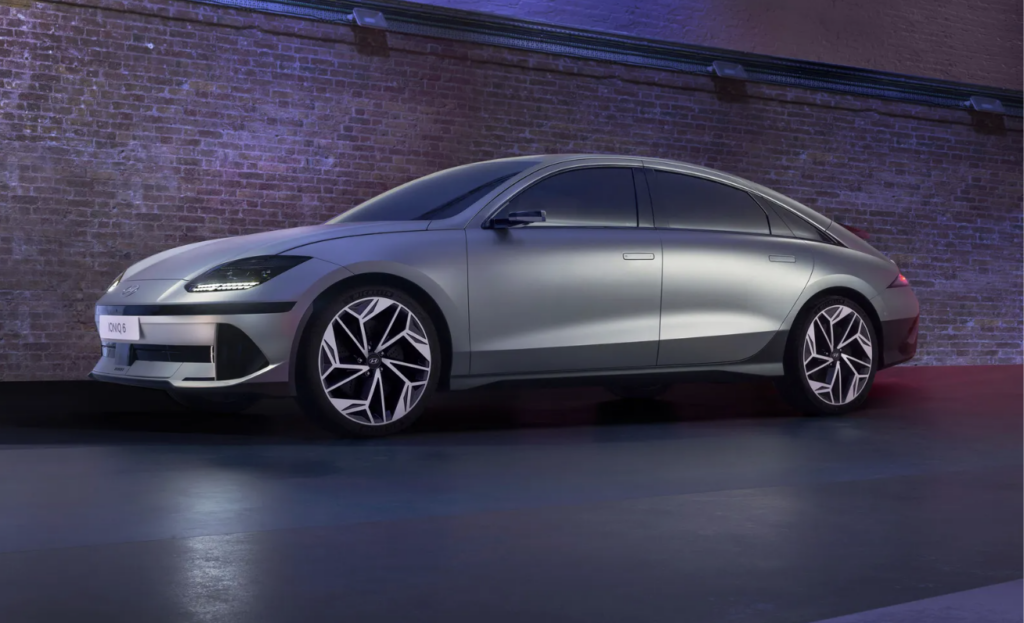
What did we all drive before 75% percent of us drove crossovers, SUVs and pickup trucks? You guessed it, sedans. Despite record gas prices, sedans haven’t rocketed to popularity quite as they had in previous gas price spikes. Is there any hope for the future of sedans? If we turn to the world of EVs, clearly there is. Tesla’s Model 3 continues to sell hundreds of thousands of Model 3s annually, outselling the likes of BMW and Mercedes ICE sedans.
In the realm of electric mobility, range is king. Range will reign supreme until charging stations are widespread and reliable, which is likely years away. Electric sedans offer a major advantage over other EVs, despite a lower profile and lesser interior volume. Electric cars dominate range and efficiency. They’re more aerodynamic, and it shows in the official numbers.

Tesla’s Model 3 gets well over 350 miles of range, and the new Lucid Air luxury sedan exceeds 500 miles on a charge. Now, Hyundai’s IONIQ 6 electric car is joining the gaggle of electric sedans. Will it be the new range king? probably not, but it’s likely to offer far more miles on a charge than its crossover relatives.

In 2020, there was a lot going on in the world, so you probably don’t remember Hyundai’s string of electric future unveilings. One of them was the ‘Prophecy’ concept. Another was the Hyundai ‘45’ concept, which was later brought to life as the award-winning IONIQ 5. Many noticed that Hyundai did the unexpected: they made a concept car into reality with minimal design changes. How was this possible? It turns out the interior and exterior designers get to have lots of fun with EVs due to the flexibility of the electric platform. Batteries lie beneath the floor, and electric motors are the size of a duffle bag. Now, we can see that the IONIQ 6 follows the same path to production, and that’s a great thing!
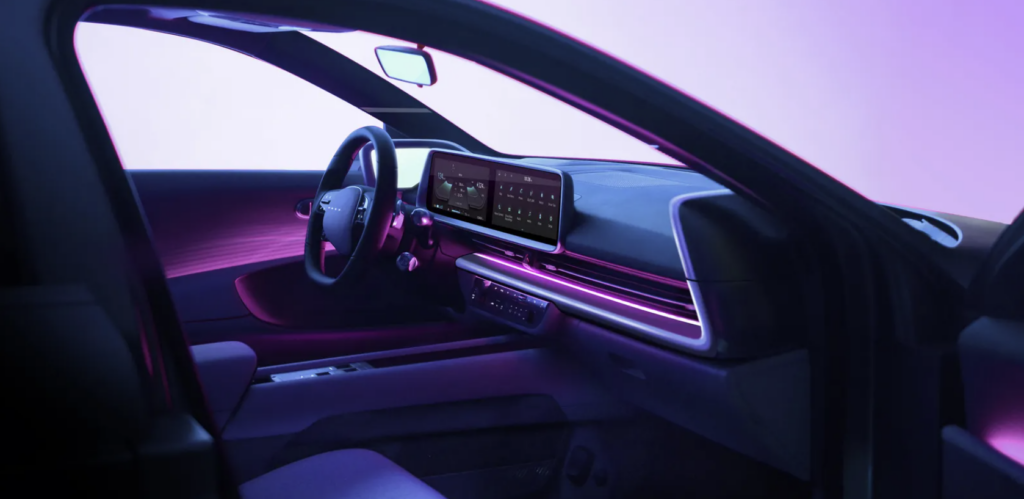
Hyundai has been teasing the IONIQ 6’s specs for weeks now. Here’s what we know:
Looking for an electric vehicle available sooner that the IONIQ 6’s 2024 arrival? Here’s every EV’s availability and wait times.
Check back for the latest updates. More information will be available from Hyundai soon!
Between 500 and 800 auto recalls are issued every year, affecting tens of millions of American vehicles. In fact, recalls have become so common that many drivers simply ignore them, which is a dangerous move. Fortunately, some automakers are making it possible to address recalls from the comfort of home. Ford’s F-150 Lightning electric truck is now subject to a recall, and Ford’s Blue Oval Intelligence feature is making the fix easier than ever before. But make no mistake: Ford’s over-the-air update capability has roots in Tesla’s decade of success.
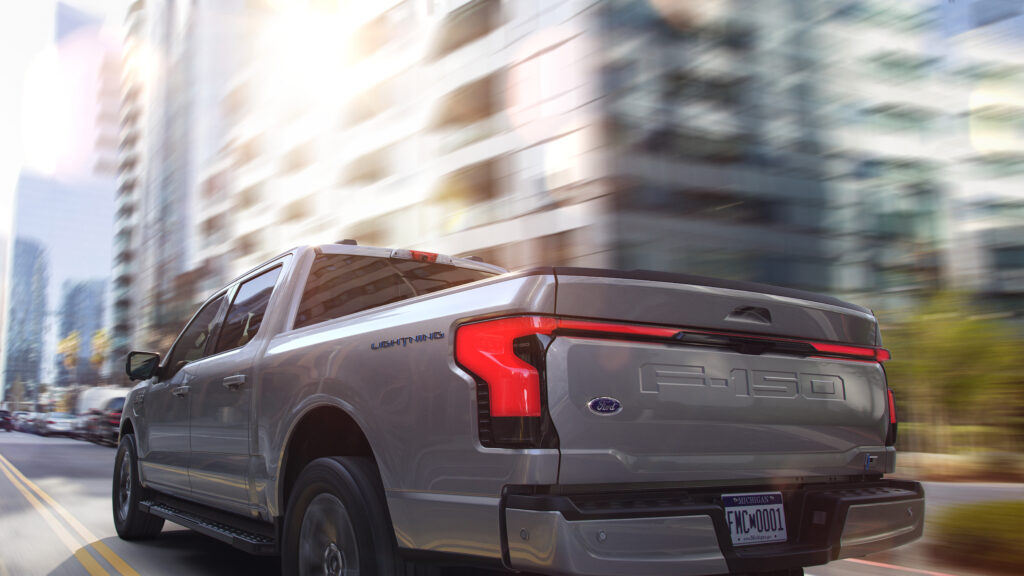
Ford Motor said Monday it will recall 2,906 F-150 Lightnings because a software issue could result in a failure to provide warning of low tire pressure. The 200,000 F-150 Lightning reservation holders are certainly relieved to find that this recall is not related to Ford’s all-new electric powertrain. In this particular recall, simple human error is at fault. Ford says that the recommended tire cold inflation pressure was incorrectly set to 35 psi instead of 42 psi.
No accidents have resulted from this F-150 Lightning recall, but it’s the fix that’s noteworthy. The recall gives Ford a publicized opportunity to show the world that the F-150 Lightning is OTA capable. Over-the-air (OTA) updates have long been a top selling point of Tesla’s electric vehicles. By enabling vehicle software updates over a home wifi internet connection, OTA updates are convenient for both drivers and automakers alike.
Here’s our complete guide to automotive over-the-air updates, and what they mean for your car.
Ford’s first OTA updates were rolled out to the Mustang Mach-E in 2021. As successful as the Mustang Mach-E has been for Ford, the F-150 Lightning is on another level with hundreds of thousands of reservations, and unruly dealer markups souring its reputation to some.
To date, Ford has demonstrated its ability to send software over-the-air updates to its electric vehicles. Software OTA fixes are not as transformative as the firmware OTA fixes that Tesla has implemented. On numerous occasions, Tesla has sent OTA updates that addressed aspects of charging, acceleration, efficiency and range. We’ve yet to see Ford implement firmware OTA updates, but the automaker claims that Blue Oval Intelligence will be capable of doing so when the need arises.
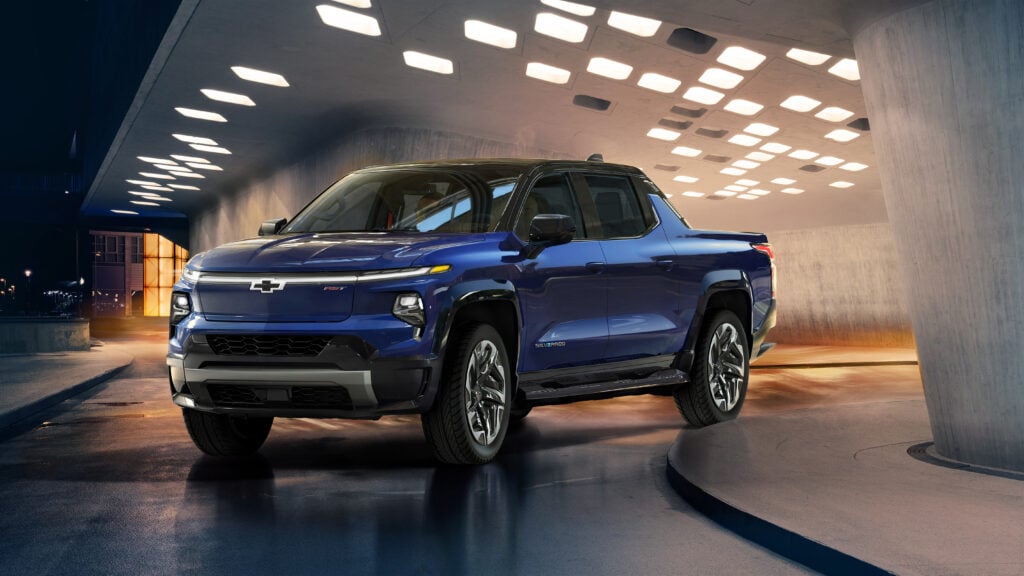
In 2022, just about every automaker claims to be bringing over-the-air updates to their future lineups. General Motors was an early pioneer of OTA updates, having tried it out with OnStar way back in 2009. The second generation of GM’s OTA updates was launched in 2019 as Vehicle Intelligence Platform (VIP). VIP now enables OTA updates for nearly every vehicle control module, not just infotainment. GM’s latest software platform is advancing OTA update capability to new heights. Ultifi is designed to provide more frequent OTA updates, similar to how Tesla owners are accustomed to.
Other legacy automakers are a bit behind the curve. The likes of Hyundai, Honda, BMW, Mercedes-Benz and Volkswagen group are all offering OTA updates for infotainment and navigation, but not much else at the moment. Electrek has a great breakdown of each automaker’s plans for OTA updates.
Chinese automaker NIO is reportedly planning to enter the American market with several OTA-capable models. NIO’s over-the-air update capabilities are second only to Tesla, with firmware-updates proven in the automaker’s overseas markets. NIO is more widely known for their battery swapping stations, which replace the need to wait around for a charge. Learn more about NIO coming to America.

With up to 320 miles of range, decent charging speeds, powerful towing capabilities and the option of using the truck’s battery as a home generator, there’s a lot to love about the F-150 Lightning. What we don’t love are the dealer markups that have been making headlines for all the wrong reasons. Is the F-150 Lightning a great deal at $40,000 to $90,000? Certainly. When dealers start adding $50,000 markups to this truck, it’s not doing the EV movement any favors.
Learn more about the F-150 Lightning’s specs and pricing.
Looking to buy? See nationwide dealer listings for the F-150 Lightning at CarEdge Car Search.
Let us know what you think. Is the F-150 Lightning comparable to a Tesla, or is it too early in the game to make such bold claims? How much would you pay for an electric work truck? Are EV incentives enough for you to make the switch? Let us know!

The new and used car markets have seen it all in the first few years of this decade. 2020 kicked off with a few months of normalcy before the bottom fell out. Car sales plummeted by 15% before pulling the quickest turnaround in automotive history. In 2022, simply finding the car you want can be a tall order, not to mention getting it at MSRP. But the way we buy cars has changed too. A third of car sales are now completed online, and the recent popularity of direct-to-consumer sales is showing that shoppers are tired of the dreaded dealership runaround.
My own recent car buying experience taught me a lot about how in today’s market, knowledge certainly is power. Although it’s still a seller’s market, that doesn’t mean you can’t drive away a winner with your next auto purchase. These are the game-changing solutions that are bringing consumer empowerment to the car buying experience in 2022.
I’ve experienced the annoyance of online dealership pricing firsthand. Earlier this year, I was in the market for a car. After narrowing down my search to a few models, I began the tedious process of contacting dealerships to get the ‘real’ pricing. I was quickly discouraged, but refused to give up. Dealers would advertise a car at MSRP, but upon making contact, the true price became difficult to tease out. Some salespeople would let me know on the phone that there was a $2,000 to $10,000 ‘market adjustment’, which of course wasn’t reflected in the online pricing. Others would only spill the beans once I specifically asked about ‘additional dealer markups’. However, the madness didn’t end there.
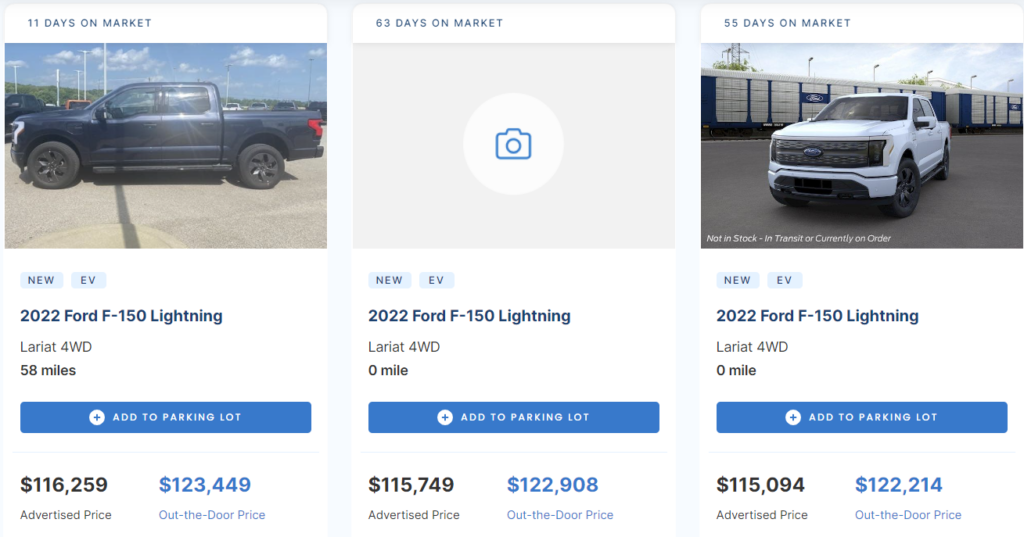
Buying a car, whether new or used, too often feels like an obstacle course in this day and age. Asking your salesperson about dealer markups doesn’t cut it nine times out of ten. I quickly learned that it was just as important to inquire about dealer add-ons. Shopping for the all-electric Hyundai IONIQ 5, I found more than a few dealers in my region claiming to sell ‘at MSRP’, but with up to $2,500 in dealer add-ons such as pinstripes, ceramic coating, nitrogen-inflated tires and door guards. After a dozen phone calls ending in disappointment, I was left wondering if I should just go buy a Tesla to avoid the haggling and money games. Or maybe I’d wait it out for Ford’s supposed Model-e no-haggle pricing. Still, I pushed on.

Fortunately, I did end up finding the car I wanted at true MSRP at Hyundai 112 in New York. The power of crowdsourced reviews at CarEdge’s Car Dealer Reviews made it a whole lot easier to sift through thousands of auto dealers to find honest, pro-consumer car dealerships in America. Nearly 2,000 dealerships have been reviewed, with more added every day. So even if the dealership went out of their way to seem honest, I could see what real customers had to say. Why didn’t this exist before?!
When shopping for a car, the price you see is usually not the price you pay. The number you should really be looking for is the out-the-door price. With this in mind, CarEdge created the perfect car search engine for car shoppers looking for transparent pricing. CarEdge Car Search features the Out-the-Door Price to give you a better idea of how much a car really costs. It takes the dealer’s advertised price and adds in estimated taxes and fees. Finally, consumers get an accurate picture of what to expect in the finance office.

A $2,500 difference between the advertised price and Out-the-Door Price is not uncommon. Taxes, doc fees and registration fees vary widely from state to state. When buying in states with a high sales tax, the difference can be substantial for a car with a big price tag.
During a vehicle’s lifetime, there can be sharp changes in its market value. Knowing the price history is key to effective negotiating. If a car has seen repeated price drops or has been sitting on the market for a long time, your buying power is much greater than if it was fresh on the lot. CarEdge Car Search includes detailed new and used price history for every vehicle on the market.
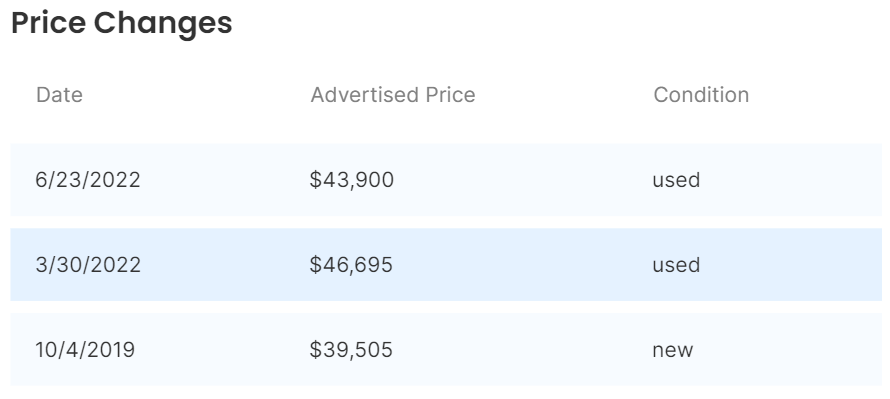
This 2019 Honda Ridgeline has been on the market for months, and has seen a significant price drop. Time to negotiate!
Vehicle supply data is yet another number you can use to your advantage when negotiating on a new or used vehicle. For instance, if there’s an abundance of Nissan Rogue’s in your region, you know the dealer better not be playing ‘limited inventory’ games with you.

On the other hand, if there are only 15 Hyundai IONIQ 5’s around (as was the situation in my case), you know that you’re going to be fighting an uphill battle. All in all, you’re a better informed and more prepared car buyer with the behind-the-scenes research that CarEdge Car Search provides with every auto listing.
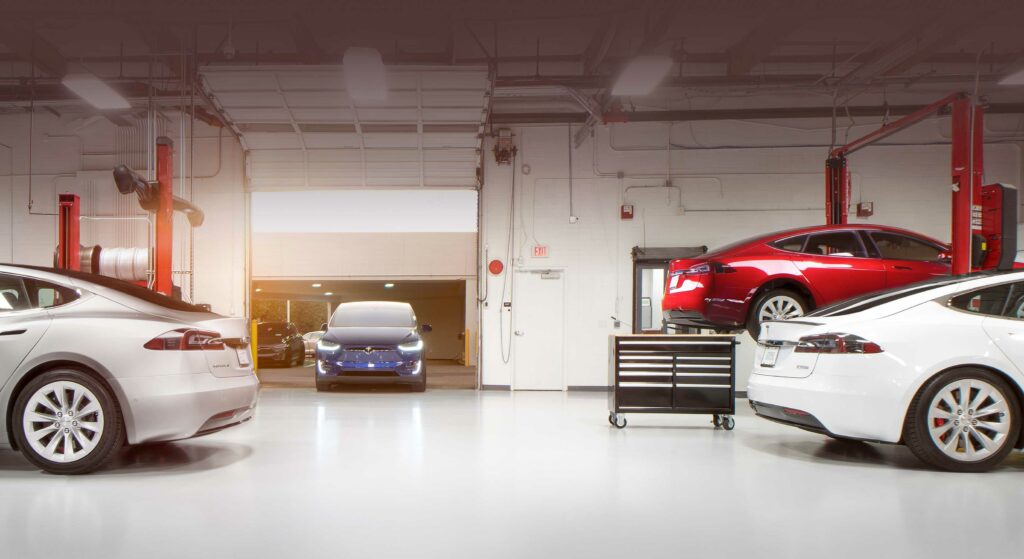
Past auto maintenance troubles giving you anxiety? Now you can get a free, no-hassle instant quote for an extended warranty while searching for your next car online. Since the start of the pandemic, Americans have been spending 124% more money on auto repairs. That’s a startling figure that would surely be lower if more drivers opted for an extended warranty with top-tier coverage and transparent pricing.
Get a free quote for CarEdge’s Extended Warranty for ANY vehicle before OR after you buy!
Whether you’re thinking about buying new or used, the latest new car inventory and used car sales statistics point towards a rough second-half of 2022. Fortunately, this new car buying toolkit from CarEdge puts power back in the hands of the people.